Piezoelectric igniter crystal from a lighter
This page shows how I got a piezoelectric igniter from a lighter. Piezoelectric igniters are useful wherever you need to make a spark and can do so manually. For DIYers the spark is usually used to ignite a gas, such as in a spud gun.
Make sure you get the right kind of lighter (see photo below, left.) You want the type where you simply press down on something. The type that has a wheel that you turn does not have a piezoelectric igniter inside.
To get at the insides, in most cases you just need to pry off some sort of metal or plastic cover that's in the area the flame goes through (see photo on left.)
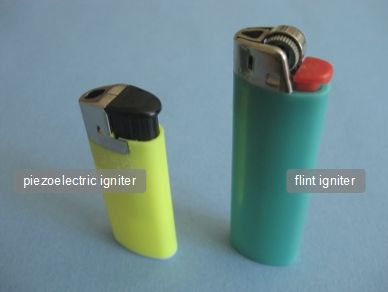
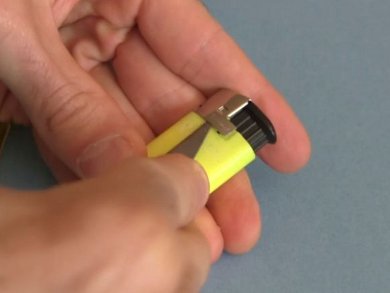
The photos below show where the spark appears in the lighter. The spark is arranged in the path of the gas so that it'll ignite it. Pressing down on the igniter both creates the spark and opens a valve to let the gas flow out. The spark ignites the gas and you get a flame.
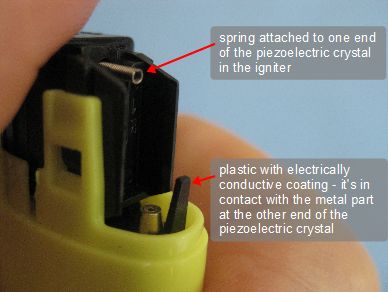

Once you've removed the cover, as described above, the piezoelectric igniter can usually just be pulled out easily.
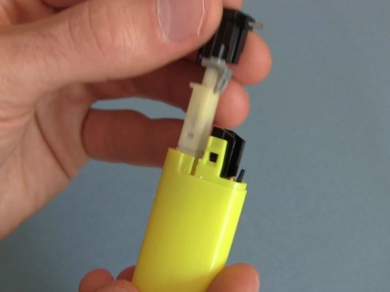
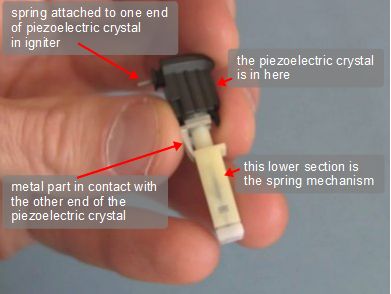
In the photo below I've completely exposed the piezoelectric crystal, removing it from the igniter mechanism so that I can activate the crystal by hitting it hard against the piece of aluminum foil on the table. The oscilloscope shows the resulting 320 volt spike.
Removing the crystal from the igniter mechanism like this isn't usually desired. You want the igniter mechanism because it gives you an easy way to activate the crystal, simply by pressing a trigger. I did this for experimental reasons only.
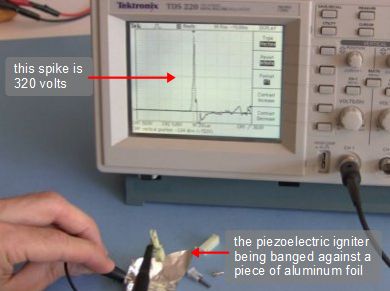
Below I'm showing how you'd connect wires to this particular igniter so that the spark can be put anywhere you want, at the other ends of the two wires.
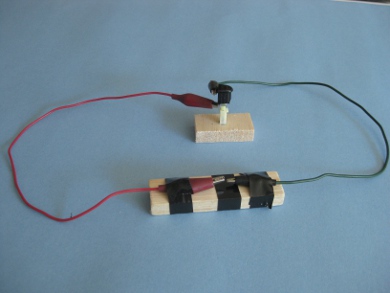
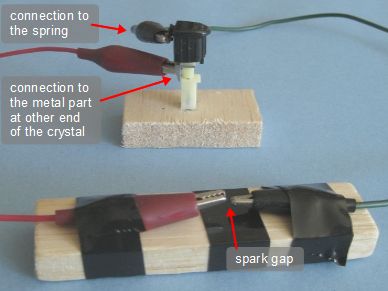
Here is a sample of igniters I've taken from various lighters over the years. The two on the right were from BBQ lighters. Notice that they all have two connection points where the high voltage spike is taken from, where you'd normally connect wires to.
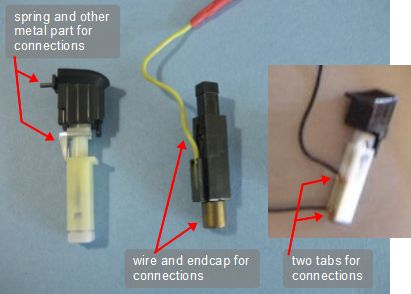
Video - How to take Piezoelectric Igniter from Lighter for Spud Gun
The following is a video showing my full analysis of the igniter as used in a lighter and how I got it out and tested it.
